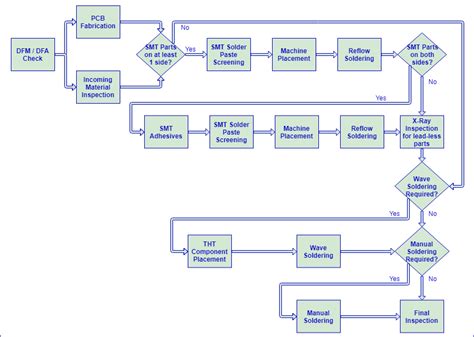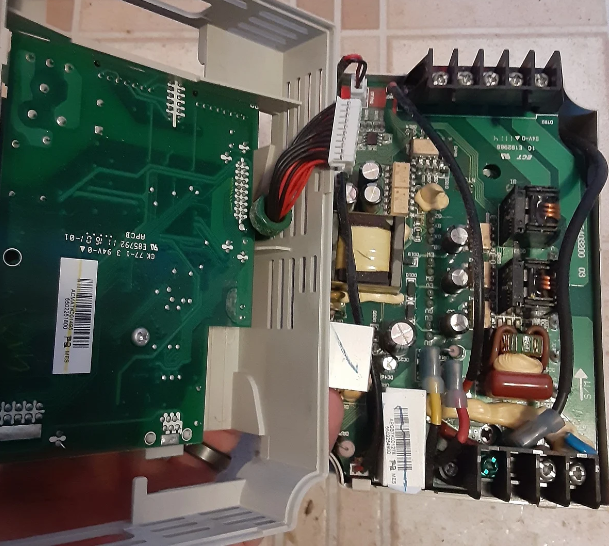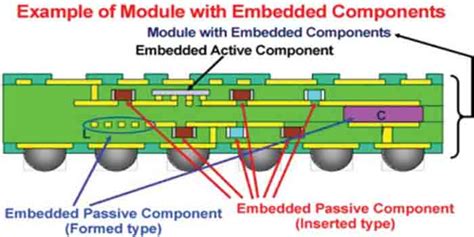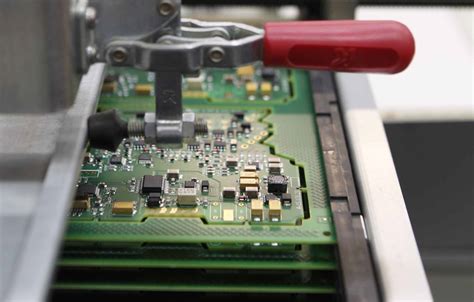Optimizing PCB Assembly and Manufacturing for Efficiency and Quality

Key Takeaways
In the realm of PCB assembly and manufacturing, understanding the nuances of the process is crucial for achieving optimal results. One of the primary goals in this field is to enhance both efficiency and quality, ensuring that each PCBA meets stringent standards. A critical takeaway is that adopting best practices not only improves production timelines but also plays a vital role in maintaining product quality. For instance, utilizing automated assembly techniques can significantly reduce cycle time while minimizing human error.
Furthermore, the integration of innovative technologies, such as advanced soldering techniques and robotics, is reshaping traditional methods in PCB manufacturing. These innovations enable manufacturers to produce more complex designs without compromising on quality or delivery speed. Implementing robust quality control measures throughout the production process is equally important; regular inspections and testing phases can identify potential issues before they escalate into costly reworks.
Additionally, streamlining workflow through proven techniques like Just-In-Time (JIT) manufacturing allows for a more agile production environment. This efficiency not only reduces waste but also enhances responsiveness to market demands. Tables presenting comparative data on production times and defect rates before and after implementing these strategies highlight the tangible benefits seen by companies committed to optimizing their PCB assembly processes.
By focusing on these key areas—understanding processes, adopting innovative technologies, ensuring quality control, and optimizing workflow—manufacturers can achieve a balanced approach that enhances both efficiency and quality in PCB assembly and manufacturing efforts.

Understanding the PCB Assembly and Manufacturing Process
The PCB assembly process, often abbreviated as PCBA, is a critical component of modern electronics manufacturing, encompassing a series of precise steps that transform raw materials into functional electronic circuits. This intricate journey begins with the design phase, where engineers use sophisticated software tools to create a blueprint for the circuit board layout. Once the design is finalized, the process moves to the production of printed circuit boards (PCBs), which involves etching copper onto substrates to form conductive pathways.
After this phase, component placement follows. During this stage, automated machinery typically employed in pcb assembly meticulously places electronic components onto the board according to the specified design. This is where technological advancements come into play; innovations such as pick-and-place robots enhance efficiency and precision, ensuring that components are positioned accurately and securely.
Next comes soldering, integral to PCB assembly. This involves applying solder to establish reliable electrical connections between components and the board. There are various soldering techniques available today, such as wave soldering and reflow soldering, each with its advantages depending on production needs. Additionally, continuous monitoring during these phases allows manufacturers to maintain high standards of quality control.
Ultimately, understanding each step in the pcb assembly process helps manufacturers improve their overall workflow and reduce errors. By integrating best practices and leveraging advanced technologies throughout these stages—designing, fabricating PCBs, placing components efficiently, and ensuring robust solder connections—companies can significantly enhance both efficiency and quality in their manufacturing operations.
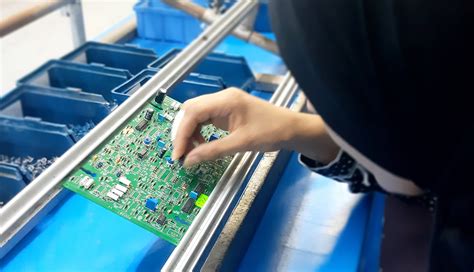
Best Practices for Efficient PCB Assembly
To achieve optimal results in pcb assembly and manufacturing, implementing best practices is essential. One foundational approach is to ensure proper design for manufacturability, which involves creating PCBA layouts that emphasize ease of assembly. This can significantly reduce errors during the production process and enhance overall quality. Moreover, utilizing automation where possible can streamline operations; automated pick-and-place machines, for example, drastically minimize labor inconsistencies and increase placement precision. Regular training of personnel on the latest techniques and equipment is also critical; a knowledgeable workforce is indispensable for maintaining high standards in production.
Additionally, establishing a robust supply chain by collaborating closely with material suppliers can enhance both the efficiency of getting components on time and the quality of materials used. Another important aspect is real-time monitoring during the pcb assembly process; this allows for immediate corrections to be made if any deviations occur, ultimately upholding quality control. Emphasizing continuous improvement through regular assessments of manufacturing outcomes helps identify bottlenecks and streamline workflows. By prioritizing these best practices, companies can significantly elevate both efficiency and quality in their pcba processes.
Innovative Technologies Transforming PCB Manufacturing
The landscape of PCB assembly and manufacturing is undergoing a significant transformation thanks to the integration of innovative technologies. One key advancement is the adoption of automated pick-and-place machines, which enhance precision and speed in placing components onto circuit boards. These machines significantly reduce human error, ensuring that each component is accurately positioned during PCB assembly, resulting in a more reliable final product. Additionally, the implementation of robotic assembly systems facilitates higher throughput while minimizing labor costs. Such systems can operate continuously, thereby optimizing production cycles.
Moreover, the rise of Industry 4.0 technologies brings smart manufacturing into play. This includes the use of sensors and IoT (Internet of Things) devices on the production floor that communicate real-time data about machine performance and production metrics. By leveraging this data, manufacturers can make informed decisions to prevent bottlenecks and enhance overall efficiency in their pcba processes.
"Incorporating innovative technologies can redefine efficiency standards in PCB manufacturing," suggests industry expert Jane Doe.
Finally, software innovations like advanced simulation tools aid in understanding thermal performance and signal integrity before physical production begins. This proactive approach allows for design adjustments that can save time and reduce costs associated with prototyping errors.
The synergistic combination of these technological advances not only streamlines workflow but also elevates the quality of produced PCBs, making them more resilient against both electrical and mechanical stress while meeting stringent industry standards.
Quality Control Measures in PCB Production
Quality control plays a crucial role in the pcb assembly and manufacturing process. Implementing stringent quality inspection techniques throughout various stages of production ensures that every printed circuit board assembly (pcba) meets the necessary standards for functionality and reliability. Utilizing automated inspection systems, such as Optical Inspection (AOI) and X-ray inspection, can greatly enhance the ability to detect defects early, minimizing waste and reducing costs associated with rework. Moreover, adopting a comprehensive quality management system allows manufacturers to establish criteria for performance metrics, track quality-related data, and facilitate continuous improvement. Training personnel on proper assembly techniques and quality protocols is essential; well-trained employees are better equipped to maintain high production standards while identifying potential issues before they escalate. Finally, conducting regular audits of both processes and materials ensures compliance with industry standards, fostering a culture of excellence in pcb assembly practices that not only enhance product quality but also bolster customer satisfaction. As technologies evolve, integrating advanced methodologies like Lean Manufacturing can streamline these processes even further, promoting efficiency alongside excellence in pcba outcomes.
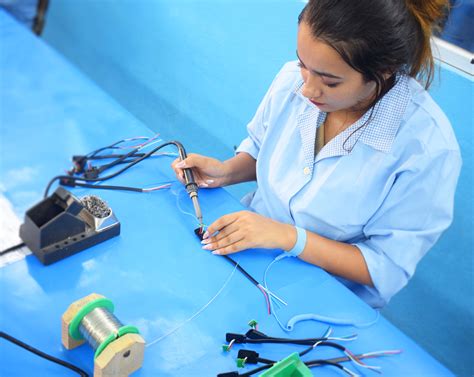
Streamlining Workflow: Techniques for Enhanced Efficiency
In the realm of PCB assembly and manufacturing, streamlining workflow is vital for achieving both efficiency and quality. One approach to enhancing workflow is by adopting lean manufacturing principles, which focus on minimizing waste while maximizing value. By identifying and eliminating non-value-added activities, production processes can become more agile and responsive. Implementing automation technologies can also significantly contribute to a more efficient workflow. For instance, employing robotic systems in the PCBA processes allows for faster assembly, reducing manual labor and potential errors. Furthermore, integrating comprehensive inventory management systems ensures that materials are available when needed, preventing production delays caused by shortages. Another important technique is fostering cross-training among workers; this enables employees to perform multiple roles within the assembly line, ensuring flexibility and maintaining productivity even when unexpected issues arise. When teams are well-equipped to manage various tasks within the PCB assembly process, they can adapt more readily to fluctuations in demand or production challenges. Overall, these strategies not only streamline workflow but also enhance overall operational quality in PCB manufacturing environments.
Case Studies: Success Stories in PCB Assembly Optimization
In the competitive landscape of pcb assembly and manufacturing, companies are continuously striving for improvements that enhance both efficiency and quality. A noteworthy example is Company A, which implemented advanced automation technologies in its pcba process. By integrating robotic assembly lines and smart analytics, they significantly reduced the production time by 30%, while simultaneously improving product reliability through consistent quality control measures. Similarly, Company B adopted a lean manufacturing approach, which streamlined its workflow and minimized waste. This shift not only increased their throughput but also fostered a culture of continuous improvement among staff. The implementation of real-time monitoring systems at Company C further exemplifies the potential for optimization in pcb assembly. Their ability to track each stage of production enabled timely interventions that preserved product integrity, thereby maintaining high standards. These case studies underscore that with strategic innovation and a keen focus on process enhancement, organizations can achieve remarkable efficiencies in pcba, ensuring that they remain at the forefront of the industry while delivering exceptional quality to customers.
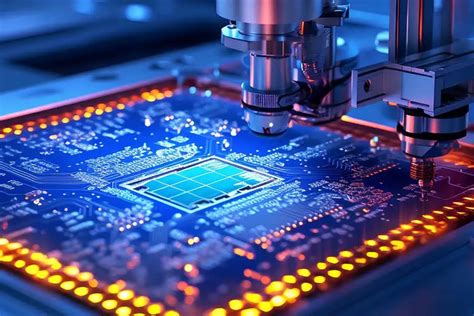
Future Trends in PCB Manufacturing and Assembly
As the landscape of PCB assembly and manufacturing continues to evolve, several key trends are emerging that promise to reshape the industry. One significant trend is the increasing integration of automation and industrial robotics within the pcba process. By leveraging advanced robotics, companies can enhance precision and reduce cycle times, leading to not only improved efficiency but also consistent quality in production. Additionally, the adoption of smart manufacturing technologies, such as the Internet of Things (IoT) and artificial intelligence (AI), is transforming how pcb assembly is monitored and controlled. These innovations facilitate real-time data analysis, allowing for predictive maintenance and minimizing downtime.
Another crucial trend is the shift towards environmentally sustainable practices. Manufacturers are actively seeking ways to reduce waste through lean production techniques and adopting materials that align with eco-friendly standards. This expands their market appeal as consumers increasingly prioritize sustainability in their purchasing decisions.
Furthermore, the demand for miniaturization continues to drive innovation in pcb manufacturing techniques. The industry’s focus on smaller, more powerful electronics fosters developments such as advanced soldering technologies and high-density interconnects (HDI), which enable more compact designs without compromising performance.
In conclusion, these trends point towards a future where pcb assembly processes will become increasingly automated, sustainable, and capable of delivering higher-quality products while meeting the demands of an ever-evolving market landscape. Emphasizing these emerging methodologies will be essential for companies aiming to remain competitive in the rapidly advancing world of electronics manufacturing.
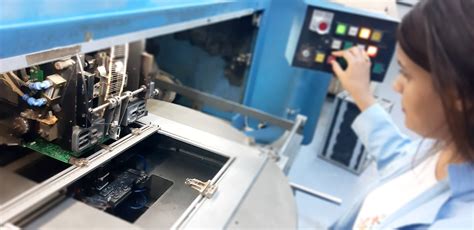
Conclusion: Achieving a Balance Between Efficiency and Quality
In the realm of PCB assembly and manufacturing, achieving a balance between efficiency and quality is essential for success. Companies must integrate advanced pcba methodologies that streamline processes while maintaining stringent quality standards. Utilizing innovative technologies, such as automation and real-time monitoring, can lead to significant enhancements in workflow efficiency. Furthermore, adhering to best practices in quality control ensures that every pcb assembly step meets predefined specifications, reducing the likelihood of defects. As organizations adopt a holistic approach that values both speed and precision, they will not only optimize their production lines but also foster a culture of continuous improvement. By focusing on this equilibrium, manufacturers can respond effectively to industry demands while delivering superior products that satisfy customers’ expectations. Ultimately, the objective lies in harnessing these strategies to create an agile production environment where pcb assembly achieves its full potential without compromising on integrity or performance.
Conclusion: Achieving a Balance Between Efficiency and Quality
In the evolving landscape of pcb assembly and manufacturing, achieving a balance between efficiency and quality is paramount. As industry demands increase, organizations must leverage a multifaceted approach that incorporates best practices and acts on insights gleaned from cutting-edge technologies. The integration of automated systems can significantly enhance production speed while minimizing the risk of errors. Implementing robust quality control measures at each stage of the pcba process ensures that products not only meet but exceed industry standards. Furthermore, fostering a culture of continuous improvement among teams can lead to innovative problem-solving strategies that refine workflows and reduce bottlenecks. Ultimately, by embracing both technological advancements and skilled craftsmanship, manufacturers can optimize their operations, leading to superior products that satisfy consumer needs while remaining competitive in the market. Maintaining this equilibrium is essential for long-term success in the realm of pcb assembly.
FAQs
What is PCB assembly?
PCB assembly refers to the process of putting together various electronic components onto a printed circuit board (PCB) to create a functional device. This process involves soldering components onto the board as well as ensuring all connections are properly established.
Why is quality control important in PCB manufacturing?
Quality control is crucial in PCB manufacturing because it ensures that each assembled unit meets the required performance standards. Implementing stringent quality measures helps prevent defects that could lead to device failure, ensuring reliability and customer satisfaction.
What are common challenges in PCB assembly?
Some common challenges include managing component alignment, minimizing soldering defects, and ensuring timely production. Addressing these challenges requires efficient workflow management and often the adoption of innovative technologies to enhance process reliability.
How can innovative technologies improve PCB assembly processes?
Innovative technologies, such as automated soldering machines and advanced inspection systems, can significantly improve efficiency by reducing manual errors and increasing precision during the PCBA process. This leads to higher productivity and better overall quality of the assembled circuits.
What are best practices for efficient PCB assembly?
Best practices include maintaining a clean workspace, using appropriate tools for component placement, implementing regular training for staff, and standardizing processes. Adhering to these practices helps streamline production and enhances overall efficiency in PCB assembly, thereby improving quality outcomes.

